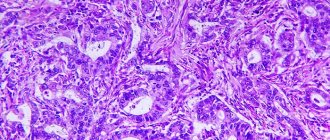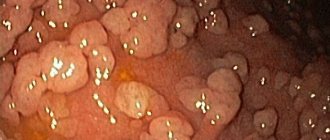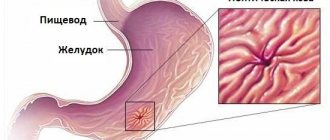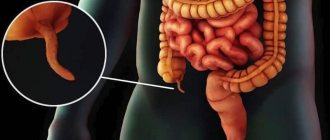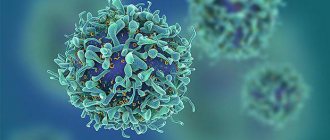Gastric xanthoma - what is it?
Treatment of any disease is impossible to imagine without studying its pathogenesis. Xanthoma is a benign neoplasm that occurs as a result of a disorder in cholesterol metabolism. According to its histological structure, it is an accumulation of macrophages. In the process of pathological changes, they capture lipid particles and transform into xanthoma elements that form tumors. On the gastric mucosa, neoplasms look like yellowish deposits with clear boundaries. Their size can vary from 5 to 15 mm.
Epidemiology and pathogenesis
According to published data from endoscopic studies, the incidence of gastric xanthoma ranged from 0.02% to 7% of all cases of examination of the gastrointestinal tract. According to the autopsy procedure, the incidence of this disease averaged 58%. For Asian population groups, the incidence of this process was noted above average, which is likely due to the high incidence of chronic gastritis in them.
The disease occurs in people of all ages and gender, but is more common in older groups of the population; the average age of the disease was 60 years. Cases of damage to children aged 2–3 years have been reported.
Macrophages are usually present in the lamina propria of the intestinal mucosa. They are the first line of defense of the innate immune system for the mucus layer against dangerous pathogens. In the event of damage to the intestinal epithelium (eg, infection or inflammation of the intestine), circulating monocytes join resident macrophages and actively counteract pathogens through phagocytosis (engulfment). A number of macrophages in the xanthoma accumulate lipids, the source of which is the membranes of damaged mucosal cells. As a result of this process, plaques are formed - gastric xanthomas.
Clinical picture
Gastric xanthoma is a small round formation that slightly rises above the surface of the organ. In its histological structure it resembles an atherosclerotic plaque. Microscopically, the formation consists of many elements; fatty inclusions are clearly visible in their cytoplasm. They fill almost the entire space of the cell, pushing the nucleus and organelles to the periphery. A benign formation can be singular, but more often there are groups of plaques scattered throughout all parts of the stomach. In this case, we are talking about a disease called xanthomatosis. Among the most common areas of localization where pathology can be detected, doctors identify the following:
- antrum;
- small curvature;
- lower body.
The greatest danger is represented by xanthoma of the antrum of the stomach. Treatment of pathology is not complete without first performing a biopsy of the material. It should be noted that the disease has a tendency to relapse. If the patient returns to an unhealthy lifestyle and neglects supportive therapy, there is a possibility of re-diagnosis of plaque in the stomach during endoscopic examination.
Symptomatic picture and diagnosis
The disease itself does not have pronounced symptoms. Heaviness in the stomach, nausea, and constipation should cause concern. If large xanthomas impede the passage of food from the stomach to the intestines, then more obvious symptoms appear: bloating, a feeling of fullness in the stomach even when taking small portions, vomiting.
The main diseases of the gastrointestinal tract also manifest themselves clearly.
The main diagnostic method is gastroscopy with simultaneous administration of drugs that remove excess mucus from the stomach. Yellow fatty nodules on the walls of the organ are foam cells and it is not easy to see them without preliminary cleansing.
In addition, a blood test (general and biochemical tests).
A biopsy is necessary to distinguish a malignant tumor from a benign one. This measure helps prevent the development of more serious complications.
Main causes of pathology
Where do gastric xanthomas come from? It is difficult to judge whether this violation is dangerous. If you take timely measures to eliminate it, you can prevent the development of complications. Doctors name several reasons for the occurrence of this pathology. It is often impossible to identify one specific one from an extensive list, which makes it multifactorial. A certain role in the appearance of xanthoma is played by hereditary predisposition and changes in the lipid profile.
The leading cause, according to most experts, is a metabolic disorder in the body. In particular, we are talking about problems at the level of lipids and triglycerides. The stomach area is lined with prismatic epithelium, represented by many glandular cells. As a result of metabolic disturbances, lipids begin to be deposited in its cells, gradually filling their cytoplasmic space. This mechanism has not been fully studied and is a kind of speculation. In general, the process of deposition of fatty inclusions in the epithelium of the stomach is similar to that in atherosclerosis. Therefore, these two pathologies have several common features.
How to warn?
To prevent this pathology, it is necessary to normalize the level of cholesterol, lipids and triglycerides in the blood using a conservative method, diet or traditional methods. With atherosclerosis, it is important to exercise and maintain normal weight levels. The diet should be healthy, balanced, excluding alcohol and junk food. If you have chronic diseases of the gastrointestinal tract, you need to prevent their exacerbation and undergo periodic examinations. In the case when a gastric xanthoma is detected during fibrogastroscopy, even in small sizes, this cannot be ignored. It is recommended to begin treatment immediately in order to prevent the progression of the deposits.
Symptoms and first signs
Benign neoplasms do not make themselves felt for a long time. This significantly complicates the diagnosis of pathology at an early stage. Typically, gastric xanthoma is detected by chance when a patient comes with complaints of gastritis or bulbitis. Its most typical symptoms include a feeling of heaviness in the stomach, vomiting, and changes in the consistency of stool. The main signs of pathology are often disguised as underlying diseases.
Diagnostic methods
As for diagnosing pathology, many doctors do not attach due importance to it. Plaques can remain undetected for a long time due to stomach foaming. To quickly clean it, patients are offered special preparations, after which they begin to act on endoscopic examination. Gastric xanthoma is a small neoplasm, but diagnosis should not be neglected. When even microscopic plaques are detected, doctors must record this fact in endoscopic protocols. Timely detection of tumors allows them to be completely cured, as well as to prevent transformation into cancerous elements.
After receiving the results of the endoscopic examination, the xanthoma tissue is sent to the laboratory, where the qualitative composition of the material is studied. It is important to differentiate benign neoplasms from malignant tumors. After obtaining a complete picture of the pathology, therapy is prescribed.
Let's sum it up
Gastric xanthomas are a pathology that has not been fully studied. Doctors do not know for certain what effect xanthomosis has on the tone and condition of the stomach and the entire body as a whole. There is an opinion that xanthomas are not only “partners” of other gastrointestinal diseases, but also harbingers of cancer, certain markers. That is why xanthomas require increased attention, diagnosis, monitoring of dynamics and therapy.
Patients diagnosed with xanthomas should adhere to general recommendations on lifestyle and nutrition, as well as regularly undergo endoscopic examination and tests to understand whether any negative changes are occurring in the stomach. These changes may be invisible to the eye, but represent the initial form or stage of an unpleasant, even dangerous disease. Therefore, it is necessary to make mandatory visits to the hospital and avoid self-medication so as not to harm yourself. Bitterness and dry mouth causes, read our article.
Drug treatment of gastric xanthoma
Therapy with drugs has two goals: eliminating the accumulation of cholesterol and correcting lipid metabolism. To perform such tasks, patients are prescribed various medications. For example, when cholesterol levels are significantly higher, statins are prescribed. The most effective medications of this pharmacological group are Atomax, Liptonorm, Roxera, Cardiostatin. They reduce the secretion of enzymes responsible for the formation of cholesterol. These drugs have side effects, so their use is only possible as prescribed by a doctor. Synthetic statins compete with drugs made from natural ingredients. It is especially necessary to highlight “Polycanazole”, obtained from sugar cane. It has virtually no side effects.
Correction of lipid metabolism cannot be imagined without bile acid sequestrants. Among them, Lovastatin is characterized by increased tolerability. Fibric acid derivatives (Fenofibrate, Gemfibrozil) are often prescribed. In the treatment of gastric xanthoma, antioxidants are actively used in combination with vitamins E and group B.
If the patient's lipid profile is disturbed, an additional consultation with an endocrinologist is considered appropriate. Most likely, examination of the arteries and aorta will be required. These measures do not relate to the direct treatment of xanthoma, but make it possible to diagnose other diseases that negatively affect the quality of life.
Traditional methods of therapy
Nature is rich in absolutely harmless statins, which are used in practice to correct cholesterol levels in the blood. According to experts, their use is justified in the treatment of xanthoma of the antrum of the stomach or its body. The following products deserve particular popularity:
- Fish oil is considered an excellent regulator of lipid metabolism. Flaxseed oil has a similar effect.
- Vitamins. The well-known ascorbic acid (its source is citrus fruits) inhibits the production of lipoproteins. Vitamin B3 is a natural statin and is found in large quantities in green vegetables and grains.
- Garlic is an effective cholesterol regulator.
Products with resveratrol (dark grapes, cocoa) are no less useful. As another excellent folk remedy, experts recommend preparing a decoction. It will require 200 g of rose hips and 5 tablespoons of chopped spruce needles. The ingredients are poured into 1.5 liters of water and boiled for about 20 minutes. The resulting decoction is recommended to be consumed twice a day, 100 ml. It is especially recommended for patients diagnosed with gastric angle xanthoma.
Traditional medicine treatment
Folk remedies have proven to be quite effective and (most importantly for this disease) safe. In addition to the diet, which consists of limiting fats and gentle meals, vitamin cocktails, natural juices (especially grape juice) and multivitamins have a positive effect on the patient’s recovery. Rosehip decoctions should be drunk for a month, half an hour before meals, just half a glass (100-150 ml) is enough.
To normalize cholesterol levels, you can use simple garlic, adding it to various foods to taste. Fish oil will directly correct the lipid profile.
Medical nutrition
Considering the importance of reducing blood cholesterol levels, treating the pathology is impossible without adjusting the diet. All fatty foods, including sour cream and cream, should be completely excluded from the diet. Alcoholic drinks are also prohibited. On the contrary, it is recommended to increase the consumption of fresh vegetables and fruits, walnuts. Gradually, you can supplement your diet with water-based cereals, lean meat and fish. Soy products have a positive effect on lipid metabolism. It is recommended to follow the therapeutic diet for 30 days and under the constant supervision of a doctor. Neglecting such rules is dangerous for relapses, including after a course of therapy.
Prevention measures
Xanthoma of the body of the stomach or its antrum is a serious pathology that requires long-term treatment. Is it possible to prevent its occurrence? When considering recommended methods of prevention, it is necessary to address issues of etiology. Xanthoma develops as a result of diabetes mellitus, metabolic disorders or endocrine diseases. Therefore, in order to avoid its occurrence, it is necessary to periodically undergo a full examination, and if violations are detected, do not self-medicate. Timely treatment of diseases is the basis for the prevention of xanthoma.
On the other hand, poor diet and bad habits play a certain role in the development of pathology. Therefore, doctors advise stopping drinking alcohol, smoking, maintaining a healthy lifestyle and engaging in feasible sports. A balanced diet is another option for preventing xanthoma. Fatty and fried foods, smoked foods, semi-finished products, and fast food should be excluded from the diet. All products that contribute to the occurrence of atherosclerosis are also prohibited.




